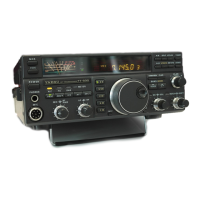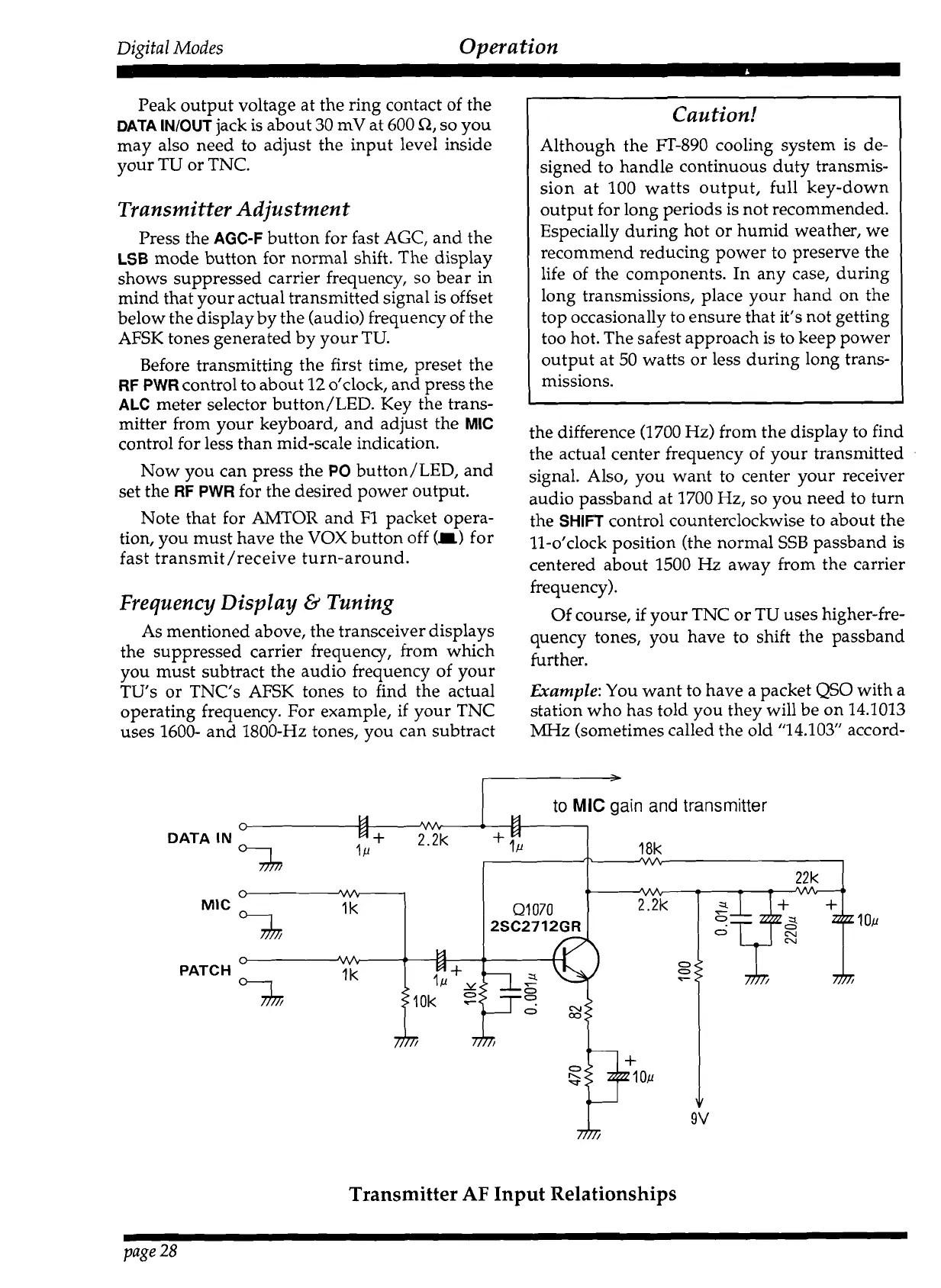Digital
Modes
Operation
Peak output voltage at the ring contact of the
DATA
INIOUT
jack
is
about 30 mV at 600
R,
so you
may also need to adjust the input level inside
your TU or TNC.
Transmitter Adjustment
Press the
AGC-F
button for fast AGC, and the
LSB
mode button for normal shift. The display
shows suppressed carrier frequency, so bear in
mind that your actual transmitted signal is offset
below the display by the (audio) frequency of the
AFSK tones generated by your TU.
Before transmitting the first time, preset the
RF PWR
control to about 12 o'clock, and press the
ALC
meter selector button/LED. Key the trans-
mitter from your keyboard, and adjust the
MIC
control for less than mid-scale indication.
Now you can press the
PO
button/LED, and
set the
RF
PWR
for the desired power output.
Note that for
AMTOR and F1 packet opera-
tion, you must have the VOX button off
(1)
for
fast
transmit/receive turn-around.
Frequency Display
b
Tuning
As mentioned above, the transceiver displays
the suppressed carrier frequency, from which
you must subtract the audio frequency of your
TU's or TNC's AFSK tones to find the actual
operating frequency. For example, if your TNC
uses 1600- and 1800-Hz tones, you can subtract
Caution!
Although the FT-890 cooling system is de-
signed to handle continuous duty transmis-
sion at 100 watts output, full key-down
output for long periods is not recommended.
Especially during hot or humid weather, we
recommend reducing power to preserve the
life of the components. In any case, during
long transmissions, place your hand on the
top occasionally to ensure that it's not getting
too hot. The safest approach is to keep power
output at 50 watts or less during long trans-
missions.
the difference (1700 Hz) from the display to find
the actual center frequency of your transmitted
signal. Also, you want to center your receiver
audio
passband at 1700 Hz, so you need to turn
the
SHIFT
control counterclockwise to about the
11-o'clock position (the normal SSB
passband is
centered about 1500
Hz
away from the carrier
frequency).
Of course, if your TNC or TU uses higher-fre-
quency tones, you have to shift the
passband
further.
Example:
You want to have a packet QSO with a
station who has told you they will be on 14.1013
MHz
(sometimes called the old "14.103" accord-
DATA
IN
MIC
PATCH
Transmitter
AF
Input Relationships
to
MIC
gain and
transmitter
0
bl
w
page
28
2
1
P
+
2.2k
18k
,
22k
I

